 Engaging disease awareness campaigns, witty marketing, and brilliant ideas of the recent years prove that pharma is getting ever more creative with its marketing strategies. However, pharmaceutical content is still perceived as 100% valuable while being neither creative, engaging, nor fun.
Engaging disease awareness campaigns, witty marketing, and brilliant ideas of the recent years prove that pharma is getting ever more creative with its marketing strategies. However, pharmaceutical content is still perceived as 100% valuable while being neither creative, engaging, nor fun.
Is that pharma’s fault? Or is pharma simply not a venue for creative people to come? Read on to learn about the origins of the “pharma is not about creativity” misconception as well as the industry’s general creativity blockers and what are limitations to expression.
Is pharma not about creativity?
What is driving the decisions of a modern customer – rational advantage or rather an emotion that the brand delivers? That is a global question, of course, but it’s enough to put yourself there to find the answers. As it turns out a remarkable percent, 80% of customers, say the experience a company provides is as important as its products and services. Some industries acknowledge it more, some less, while pharma is still balancing somewhere in the middle, struggling to find the balance between creativity, tech, and countless regulations.
However, it is safe to say that the most innovative pharma companies consider it, launching new medicines, enhancing their technologies with a great dose of creativity. To make sure pharma is yet a creative venue, look at some examples of them being explicitly creative with their promotional campaigns.
Leo Pharma – We Complete your Journey
Pharma’s prints may be rough but they are vivid and decisive possible. Innohep and One Alpha are two integrated medicines used in dialysis one after another.
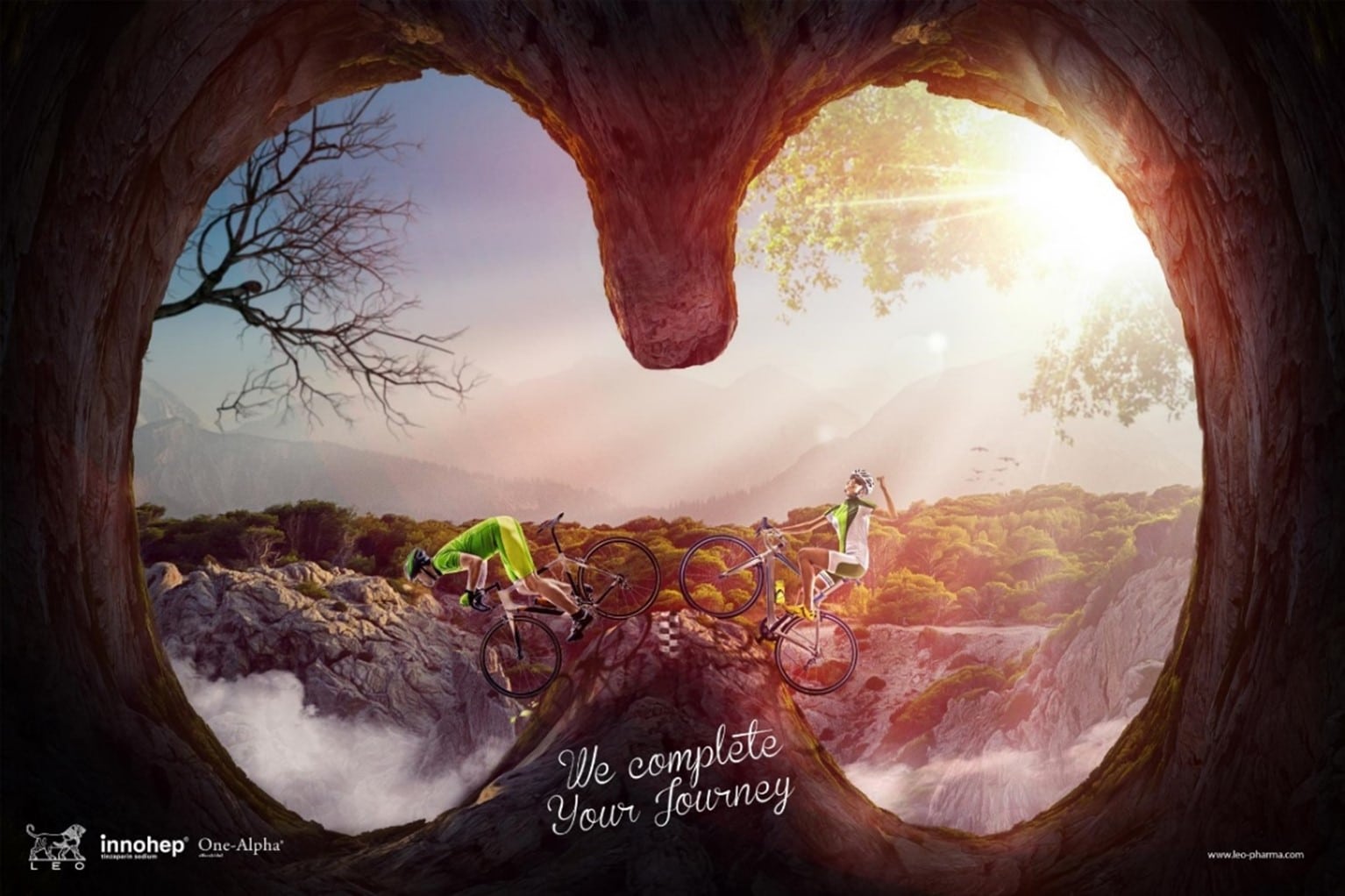
Medicom Pharma – Target Heavy Food
A clear demonstration of how heavy food can target our digestive system.
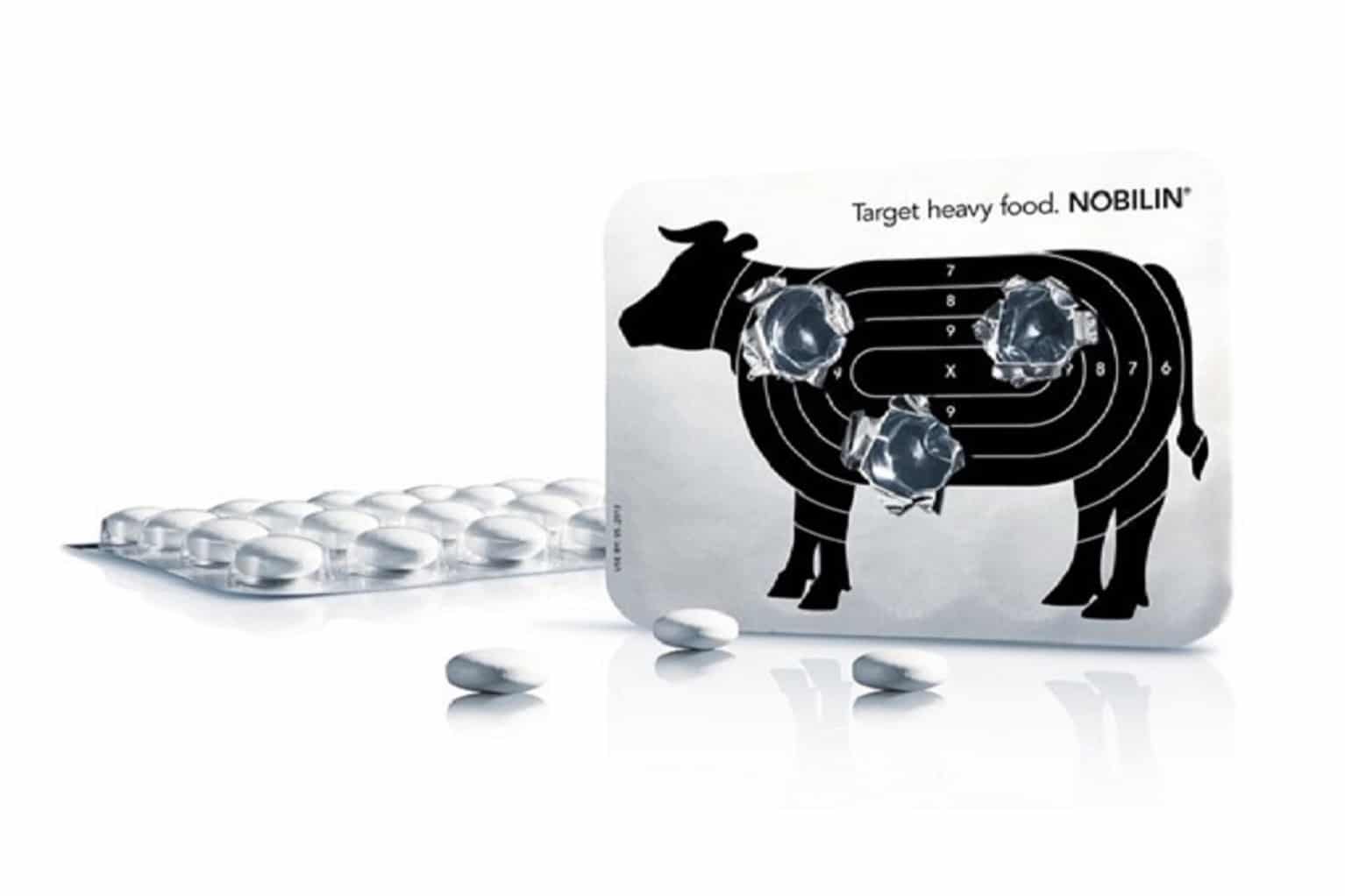
Abbvie – Putting things off
The pandemic is the about the time to take health management in our hands. The pharmaceutical giant Abbvie supports this idea with the series of TV commercials that are aimed to popularize the responsible attitude to health and timely consultations with a doctor.
However, does the creativity of pharma companies make any other impact rather than emotional? The Award Creativity Score developed by McKinsey shows that the most creative companies outperform the peer companies on financial metrics as 67% had above-average organic revenue growth. After a while, turning their creative efforts into tangible benefits for brand.
What is holding pharma’s creativity back? General industry blockers
82% of executives think creativity has helped their companies increase revenue and grow market share. The thing is there are several blockers that sometimes don’t let the pharma companies get as creative as they could. As the most obvious creativity blockers in pharma, we consider the technical aspect that nips great ideas yet in the bud. Tech does not always allow to support the idea, for example, an eDetailing presentation that typically covers many complicated topics, and each of the individual slides ends up overloaded. Due to overly complicated structure, HCPs find some materials insufficiently informative or poorly visualized, and are not always able to see the key message as clearly as the company who released it. Nobody is going to judge a book by its cover but the way a presentation looks matters.
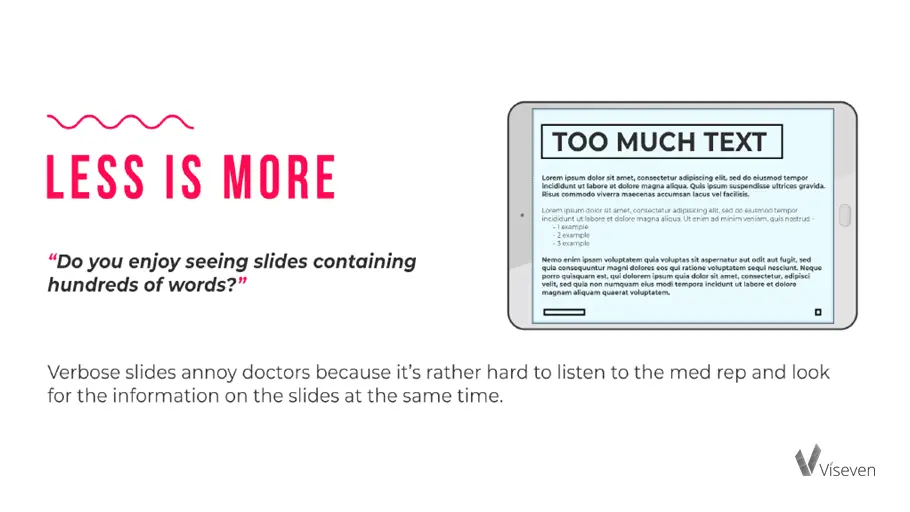
You might say that for creative people working in the pharma, this issue more likely could be attributed to space for creativity. Professionals are aware of many wonderful techniques to correctly represent the data on slides without breaking the logic of the presentation.
However, on the one hand, there might be limited technical capabilities of the team and a lack of budgets on the other. Trivial but true – budget constraints are constantly killing a lot of great concepts, forcing companies to opt for static slides and plastic ideas.
It’s not only presentations, many content types can suffer. For example, think of application development where developers often have to sacrifice a part of functionality due to these problems.
Pharma does not offer an environment as dynamic as that of some other industries. Another well-known blocker is the endless MLR approvals that are making the path of many great ideas into the road to Calvary. Many rounds of required regulations and protracted approval may affect the idea, turning into a bottleneck, preventing teams from being boldly creative, as, in the end, there may be no time to reformulate the concept.
So the ultimate question is how to be creative while staying compliant?
Technologies enhancing pharma creativity
If you will check Pharma Innovation Index (PII) 2020 introduced by IDEA Pharma, industry leaders heavily rely on creativity and innovations in their work. What is remarkable, all of them belong to the top 50 pharmaceutical companies in the world.
Let’s try to define what technologies allow them to be the most creative, innovative and ultimately successful companies on the market.
1. Template-based content creation
The poison that gets into our minds and kills many wonderful ideas is the repetition of a routine job. This often doesn’t let us look at things from different, unexpected angles. Pharma faces this problem on the regular basis along with many other issues of content production. Therefore, the invention of the Master Template approach has become akin to the invention of the assembly line in the 19th century. This approach includes a template that already has the obligatory branding elements – as well as a carefully prepared layout. This is important because once the template is developed and tested, you can be sure it is displayed correctly, looks professional, and is designed to be mobile-friendly. The template has “slots”, in which the flexible modules with content go – and can be replaced easily at any moment while being confident about the quality of the final assembly.
Thus, you don’t need to ‘reinvent the wheel’ to maintain cost-efficient, coherent messaging. This releases a lot of creative energy and allows you to move away from routine tasks and focus on other, more high-flown issues.
2. Digital Content Factories
This smart business model allows investing in creativity instead of spending time on organizational tasks. Digital Content Factories practices are currently popular among middle-lo-large pharma enterprises as the demand for digital content is huge and every day it is just growing. Content production requires a whole chain of dedicated professionals. That’s why the model involving a best-in-class content authoring solution and a dedicated team that takes care of all issues related to content production is currently in high demand.
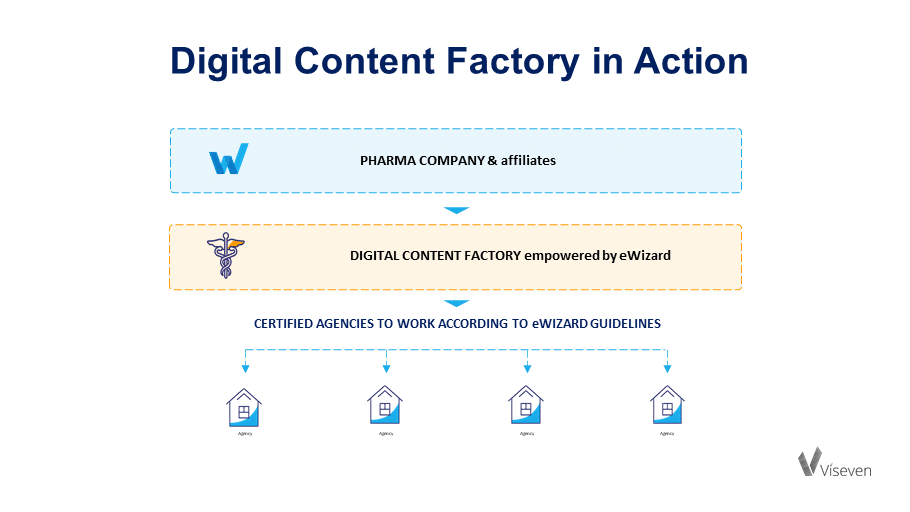
3. Proper use of DAM system
As we just mentioned, pharmaceuticals are under high pressure to produce more content quickly and efficiently. However, it’s tough to cope in such a strictly regulated environment and maintain the communication between marketing teams. Good use of a DAM system helps save the effort at each step of content development as there is no need to spend time searching on the files, pictures, and other materials. DAM securely stores content and allows the teams of content creators to share, control, and comment on it in real-time. This greatly saves time producing new materials and allows to concentrate on the mission of bringing value to the customers.
4. Reuse of digital assets
In the new reality of pharma can no longer stick to just producing content — the realities require something greater than that: a new method of disseminating messages and materials. Leading pharmaceutical companies, however, effortlessly pivot their content strategies with the modular approach in place. This method of message dissemination presupposes preapproved modular units that can later be edited and changed in the matter of just one click. They live in various channel-specific templates that can be reused across the channels. It means you don’t have to spend time approving each item, again and again, giving the scope for freer content creation.
5. Content Authoring Platforms
The smooth process of content production is possible only when the content is developed correctly. That’s why content strategy is highly dependent on the choice of content authoring solution. To create, update and localize omnichannel content quickly and efficiently, this solution has to create, update and localize omnichannel content quickly and efficiently. The solutions supporting modular approach and template-based content creation it is able to streamline the processes of producing content, break silos and drive digital transformation culture.
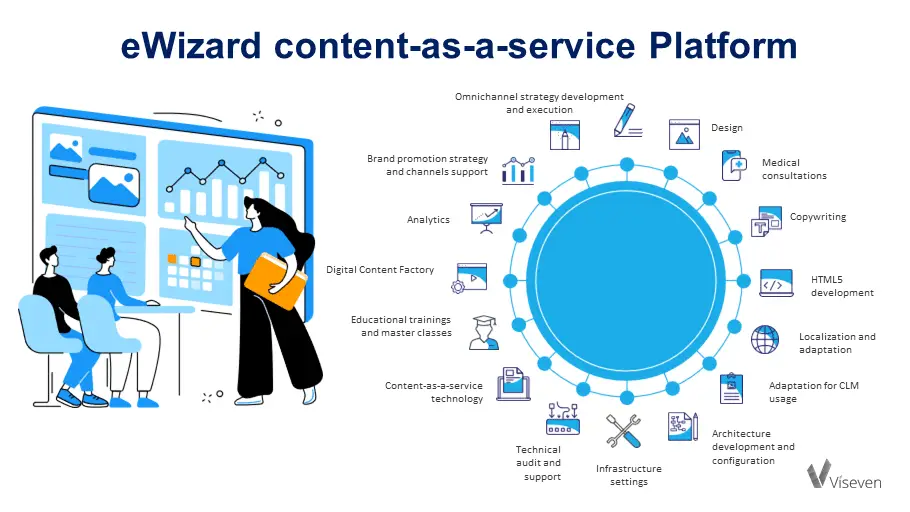
Learn more about the capabilities of eWizard! Welcome new ways to create content for eDetailing presentations, email templates, and landing pages, and be sure that each component is customizable and 100% responsive.
Today’s realities are challenging pharmaceutical companies to produce relevant content that would engaging HCPs. Our creativity is about simple ways to express complex things. Contact us to learn how the team of experts with 11+ years of experience pharma content creation approach these challenges in creative ways and produce creative content that works.
The post Creativity vs. Tech vs. MLR: Is This the Ultimate Struggle in Life Sciences Communication? appeared first on Viseven.
